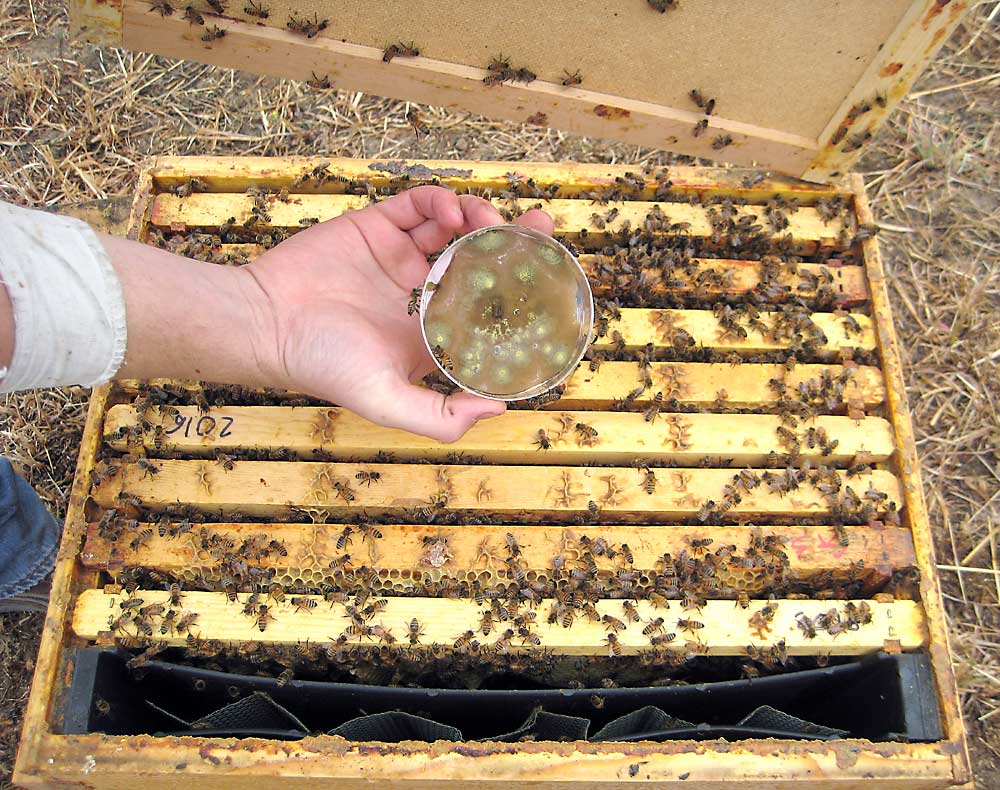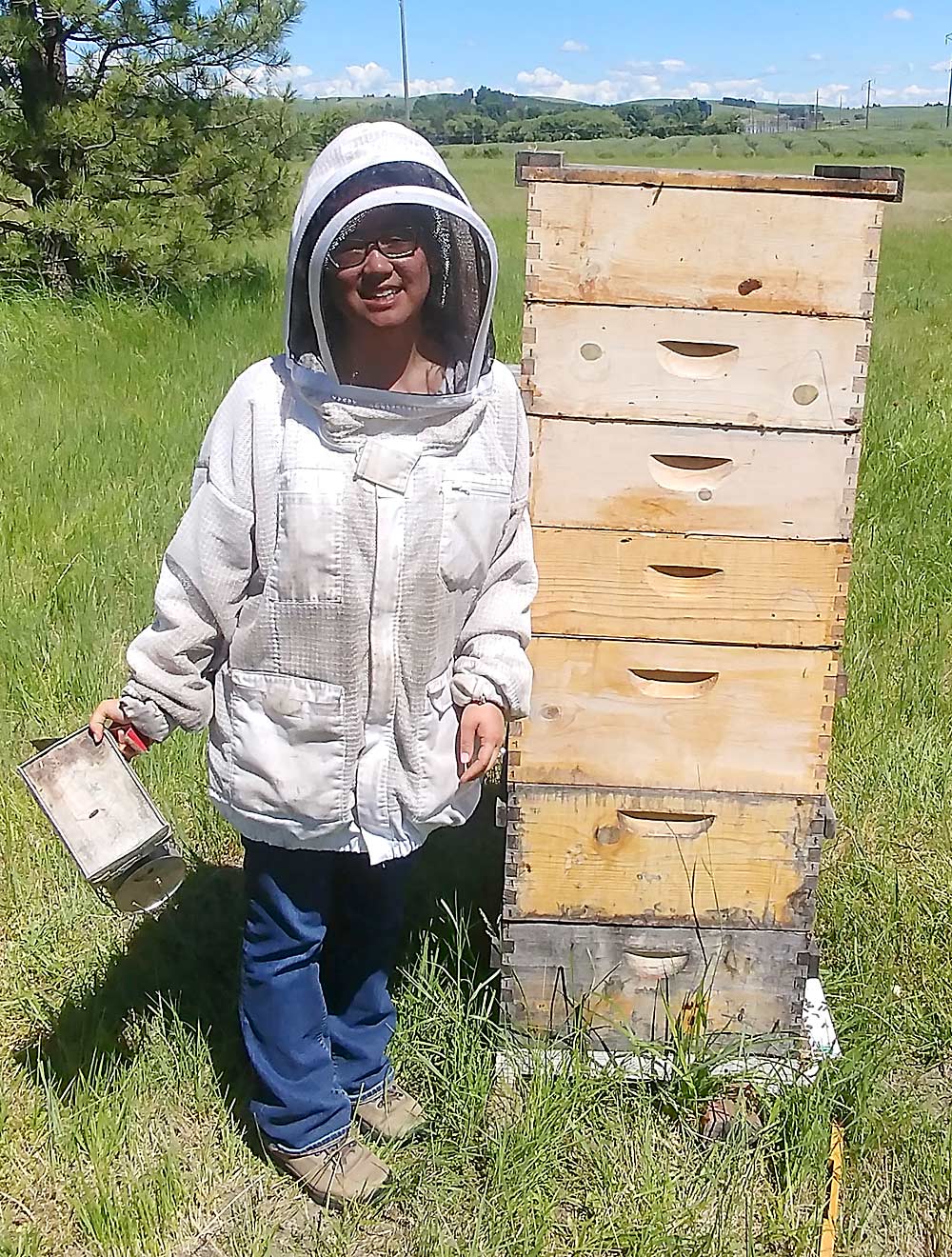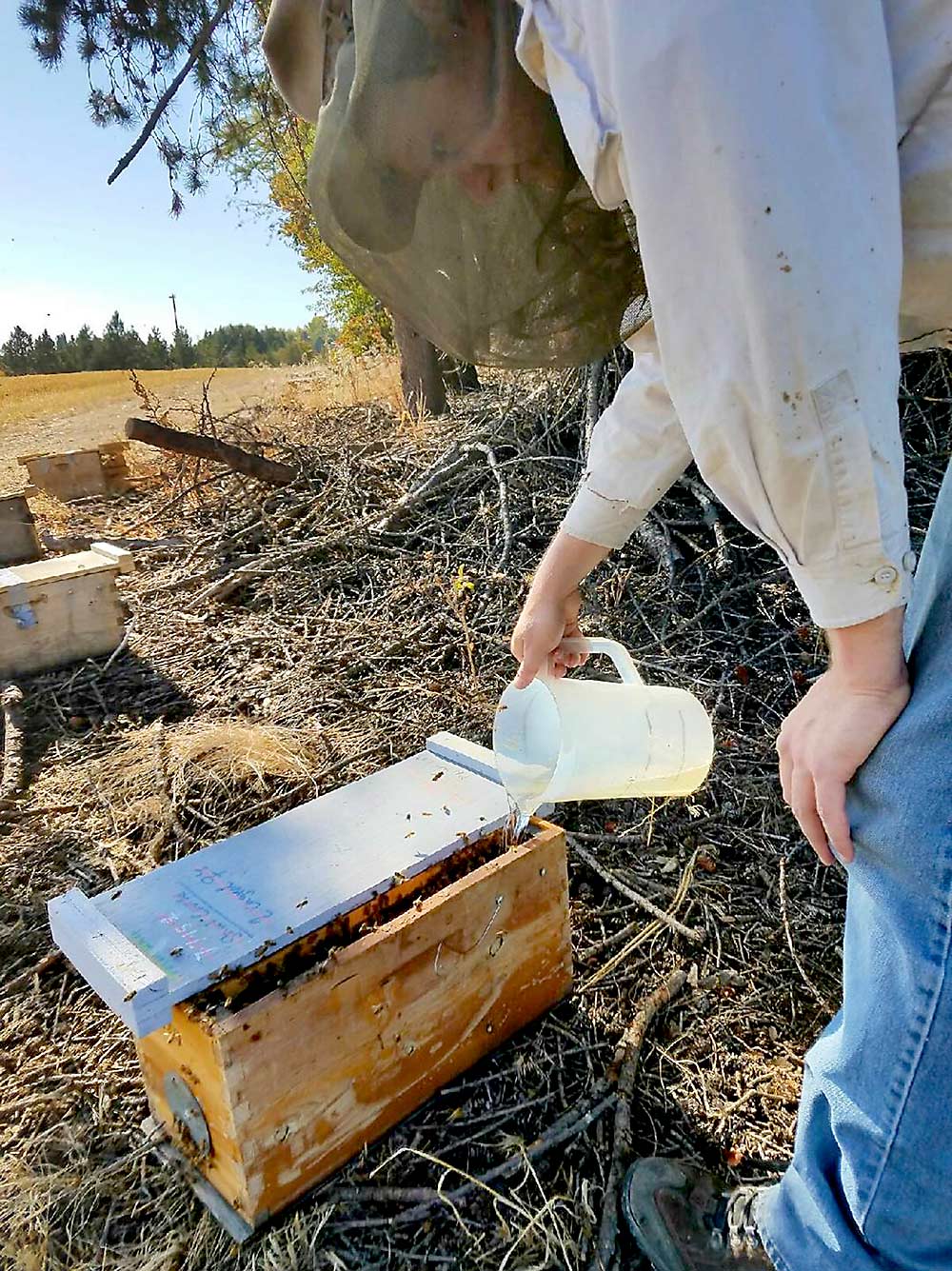
Honeybees struggle with a variety of challenges, from pesticides to habitat loss, but Washington State University researchers call enemy No. 1 the parasitic varroa mite, which weakens bees and spreads viruses.
“Imagine a pest the size of a dinner plate just sucking your nutrients all the time,” said Jennifer Han, a postdoctoral researcher working with entomologist Steve Sheppard.
His lab studies new methods for controlling the mites, including the idea that putting hives in cold storage to pause breeding will break the mite life cycle, a fungal pathogen that could act as biocontrol for the mites, and a mushroom extract that helps bees fight viral diseases.
Good Fruit Grower has written about the first idea previously (for more, see “Bees may do better being kept in the dark” from the March 15, 2018, issue).
Now, both fungi-based strategies are showing promise in lab studies, and the researchers plan field trials and dosing experiments to determine the commercial viability.
Today, beekeepers use insecticides to treat varroa mites, but the parasite’s life cycle and growing resistance hamper control efforts. That makes the idea of biological control very appealing, Han said, and so she decided to take another look at the fungal pathogen known as Metarhizium that’s already used to treat termites and other insect pests.
Previous research showed that the common, soil-dwelling fungus didn’t kill honeybees — perhaps because its spores get caught in the bees’ hair and groomed away before it can germinate on the cuticle, as it does on termites and varroa mites. Then, it grows inside those insects and kills them.
“But research got dropped in the ’90s because this is a soil-dwelling fungus and it doesn’t like warm temperatures. Honeybees keep their hives warm, so it’s hard to keep the fungus alive,” Han said.
Instead of seeing this as a fatal flaw, Han began breeding the fungus and looking for strains that could withstand heat. A few years ago, she found one. Hives treated with it have significantly less varroa and survive longer, she said.

She continues to refine her Metarhizium strain for increased virulence by basically farming dead mites.
“We treat a hive, the spores land on the exoskeleton of the varroa mite and it proliferates inside the mite, killing it, and makes spores on the outside. We collect spores off of the dead varroa (for propagation) with the idea that the ones that can kill the mites the fastest are the most virulent and infectious,” she said.
This year, she plans to refine her studies to nail down the best dose, timing and delivery method for the hive-optimized Metarhizium.
Meanwhile, her colleague, Nick Naeger, is exploring the use of fungi for a different purpose: to reduce the pressure of viral disease on the bees.
The idea actually came from mycologist and commercial fungi-farmer Paul Stamets, Sheppard said. Stamets runs Fungi Perfecti in Shelton, Washington, and he’d recently discovered that a class of mushrooms known as polypores had antiviral properties. He called up Sheppard and asked if he was interested in testing the mushrooms on honeybees.
“Paul had noticed bees foraging on his mushrooms naturally,” Naeger said. Polypore mushrooms decay trees slowly, and during their long lifecycle they produce antimicrobial compounds to protect themselves, he said.
A partnership was born. Stamets already grows the fungi for human supplements, so he provided strains he thought most promising to the WSU bee lab. They tested about a dozen different polypore strains, in the form of a fungal tea fed to the bees in sugar water. That’s an easy application for beekeepers, Naeger said.
“Most beehives in the U.S. will be fed sugar water anyway in the fall to help build up honey reserves going into winter,” he said. “A lot of the viruses also seem concentrated to the gut, so it’s an ideal delivery mechanism.”
Specifically, he looked at the two most common viruses found in WSU’s bees: deformed wing virus, which has a symbiotic relationship with the varroa mite, and the Lake Sinai virus, named after the location in South Dakota where it was first found in collapsed colonies.
Naeger fed the bees the extracts for two weeks and then assessed the difference in their viral load using a technique called qPCR to count the number of viral genetic particles the bees carried. The best extracts reduced the levels of the deformed wing virus and Lake Sinai virus 79-fold and 45,000-fold, respectively, and extended the bees’ longevity.

The benefit is clear, but the researchers are not sure whether the mushroom extracts contain compounds that are destroying the viruses directly, or if they are boosting the bees’ immune system, or both.
“They have some compounds that are very similar to compounds identified in pollen that do boost the bees’ immune system, like eating your veggies, but at the same time, there’s some compounds that do have direct antiviral properties,” Naeger said.
Lab studies continue to identify those mechanisms, while researchers are also expanding to study the extracts on a hive scale. Varroa mite pressure in their colonies was very high during the experiment, so none of the hives studied ultimately survived, but Naeger is analyzing the differences in the viral loads between hives.
These field experiments are key to figuring out how beekeepers can best use the mushroom extracts, said Sheppard.
“The trick now is how to integrate it into a management scheme that improves colony health,” he said. “There’s a chance in a year or so, they’ll be ready for beekeepers to use.” •
—by Kate Prengaman






Thank you so much for this article. Dr. Sheppard came to speak to our beekeeping club in Massachusetts in 2016 and mentioned the very early research on this at the time. It’s great to see that it is looking promising at this point. The mite problem is getting worse each year and we are eager to have more tools to fight it!
So cool fight nature with nature, naturally.